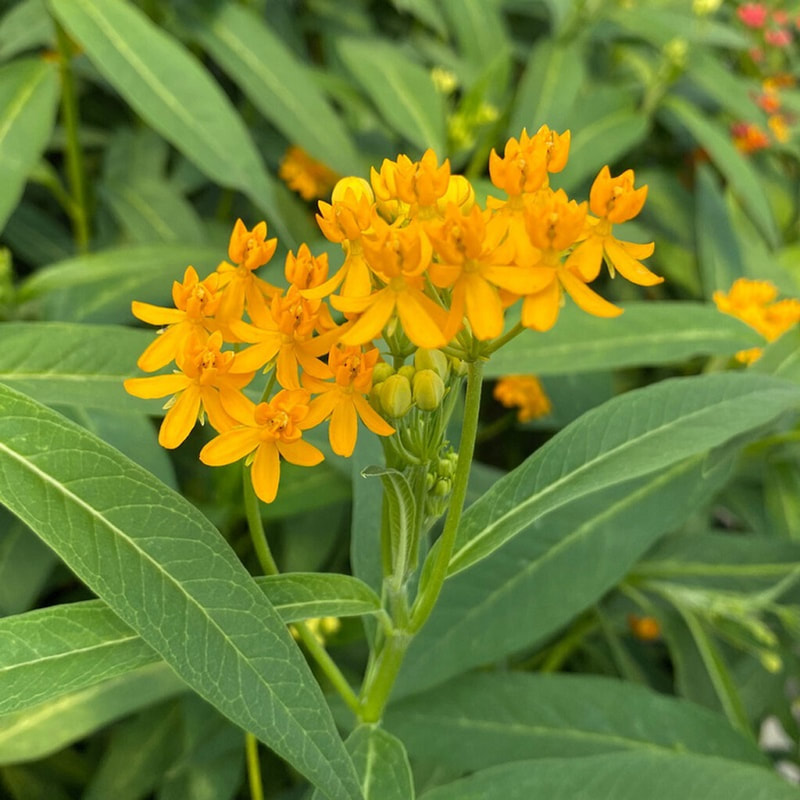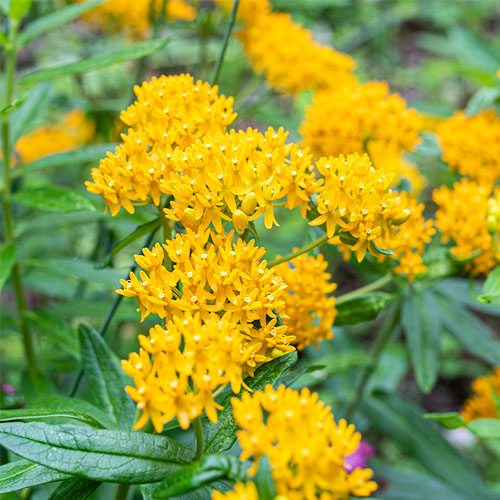Butterfly Weed "Hello Yello"
Asclepias tuberosa
Asclepias tuberosa 'Hello Yellow' (Butterfly Weed) is a native, pollinator-friendly knock-out with cheerful butter-yellow flower clusters. Flowers will bloom in summer, and the rich green foliage is the perfect complement to the flowers. This low-maintenance perennial is drought tolerant once established, making it the perfect waterwise addition to a perennial garden border, meadow, or pollinator garden. Butterflies, bees, and hummingbirds all love butterfly weed, but deer stay away. Make your butterfly garden a destination with ‘Hello Yellow’!
A virtually hassle-free, very long lived perennial, this cultivar of our native A. tuberosa offers three months of golden yellow blooms from early through late summer. Deadheading the flowers will stimulate another bloom cycle about a month after the first one.
The flowers, which are heavily laden with nectar and pollen, are particularly attractive to hummingbirds, Monarch butterflies, bees, and other beneficial insects.
Gather bouquets of Asclepias all summer long; the long stems are wonderful for cutting and are long-lasting. Sear the ends of the cut stems over a flame to stop the milky sap from leaking out.
Following the fabulous flowers, green fruits develop which rupture to reveal seeds with long, silvery-white, silky hairs reminiscent of its cousin, common milkweed. These are great to use in dried flower arrangements.

